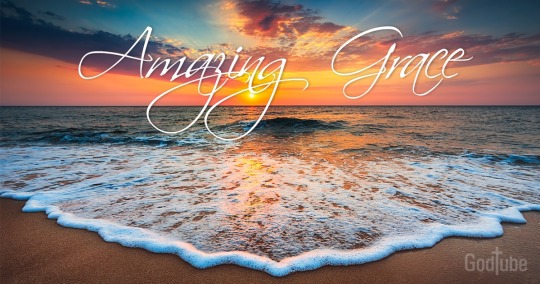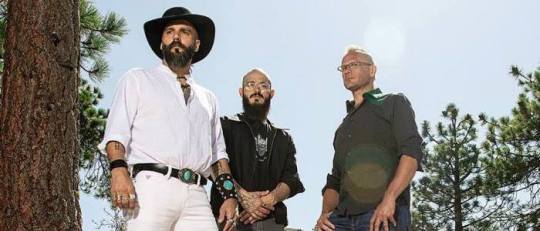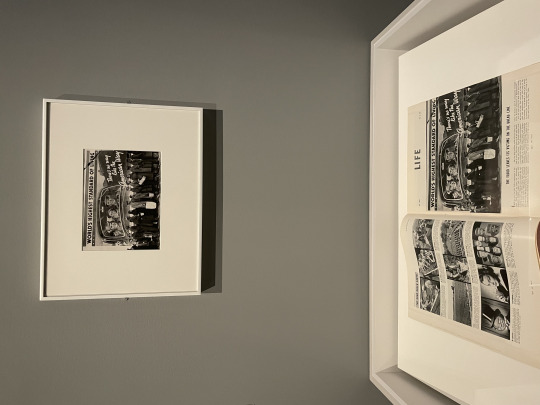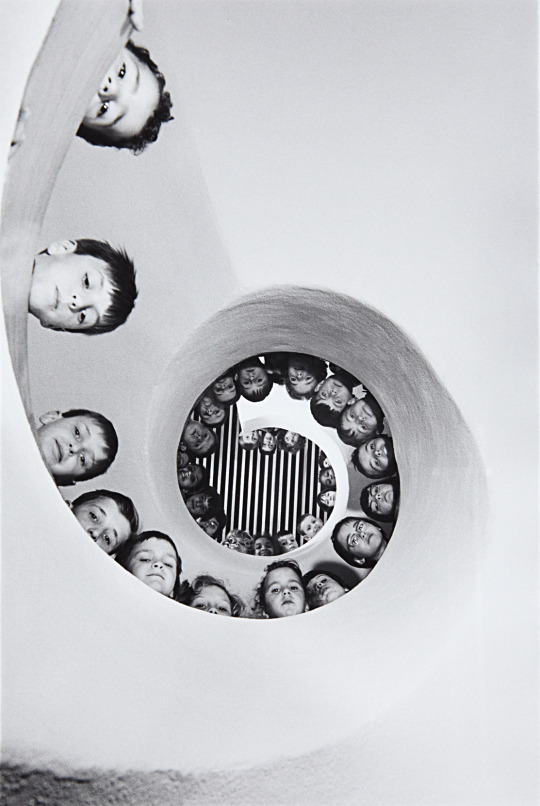#GraceSong
Text
Blogpost #7
[this is a belated blog post since I realized I missed this when we watched the film]
The Salt of the Earth striked from the opening scene, which zooms in to the gold miners in Sierra Pelada, Brazil. Much of the film felt like it wasn't about photography so much as it was an exploration of the world and of the history that Salgado has uniquely witnessed. It brought to my attention lives that I didn't even know existed (like those of the firefighters in the Great Burhan Oil Field) and created a greater realization of the problems that I had merely heard of in a textbook (like the exodus of Rwandan refugees).
I also found it inspiring and comforting that Salgado pursued so many different subjects and types of photography. It showed, in his words, that one didn't have to document only landscapes, or a particular social issue to be recognized as a photographer.
0 notes
Note
“ i’ve always been able to tell when you’re lying. ”


𝐎𝐍𝐄 𝐎𝐅 𝐓𝐇𝐄 𝐌𝐀𝐍𝐘, 𝐌𝐀𝐍𝐘 𝐏𝐄𝐑𝐊𝐒 𝐈𝐍 𝐓𝐇𝐄 𝐁𝐔𝐒𝐈𝐍𝐄𝐒𝐒 𝐎𝐅 𝐒𝐇𝐀𝐃𝐎𝐖 𝐖𝐀𝐑𝐄𝐅𝐀𝐑𝐄: how to spot a perfect lie. talented as she can be, there was no use in putting that energy into grace. as far as their work doesn’t cross, there was no reason to raise suspicion. topped with an occasional private meeting, grace was no enemy to the fox. it doesn’t guarantee that she shouldn’t be alert with her --- a playfully done with a smirk, she lets her companion roll on with her notes, “ when i’m lying to you or other people? ” they were white lies, small and insignificant. the bigger ones are meant to keep her from harm’s way, for sam’s sake, “ you might wanna evaluate so i can watch myself next time. ”
0 notes
Text

‘ and i’m getting older, but i’m not growing up, ’ @gracesongs.
0 notes
Video
youtube
YOUTUBE VIDEO - NORA GRACE
Song: Nana Triste - Natalia Lacunza ft. Guitarricadelafuente
TRANSLATED LYRICS:
I know there are things that I tell myself
That don’t have to happen
They wake up from oblivion
They come back to make me cry
I would stay with you
One, two, three more nights
If you hadn’t broken the thread
I wish to go back
I don’t blame you for my sorrow
I don’t blame you for my harm
I would build you a castle
With your salt teardrops
I cared for you as if you were a child
That didn’t know how to walk.
Let me protect you
From what could happen.
Give me peace and give me war
Give me breath, take care of me
Carnations in your hair
The tattoos of you skin
Today oozes and oozes
What yesterday tasted like honey
I curse my sanity
Little dove, take me with you
Give me peace and give me war
Give me breath, take care of me
Carnations in your hair
The tattoos in your skin
Today oozes and oozes
What yesterday tasted like honey
I curse my sanity
Little dove, take me with you
I curse you
And your salt teardrops
I curse you
You aren’t gonna make me cry
I curse you
I curse you
I curse you
And your salt teardrops
I curse you
Because I never should’ve taken care
Of a child that isn’t mine
I never should’ve taken care
I never should’ve taken care
I never should’ve taken care
109 notes
·
View notes
Text
#Amazing #Grace
#Artist Randy Travis: (Amazing Grace) https://youtu.be/JLbXnAZw2oA
Amazing GraceSong by Pentatonix
Amazing graceHow sweet the soundThat saved a wretch like meI once was lost, but now I’m foundWas blind, but now I see’Twas grace that taught my heart to fearAnd grace my fears relievedHow precious did that grace appearThe hour I first believedMy chains are goneI’ve been set freeMy God, my Savior…

View On WordPress
#authors#Christian#Commandments#Devotional#God Holy Worship Bible Scripture Love Faith Truth HandofGod MarkofGod#God Sabbath Saturday Holy Worship Bible Scripture Love Faith Truth HandofGod MarkofGod#healing medical God Jesus Angels Prayer Biblical Spiritual sinuses herbs congestion#Miracles Healing#Prayer Religion Jesus Angels Worship Praise Fact Catholic Church Baptist Scripture Motivation Revelation BooksoftheBible#reading#Religion Jesus Angels Worship Praise Fact Catholic Church Baptist Motivation Revelation#Salvation Prayer GodJesus Grace Cross Spirituality Spiritual Soul Heart Motivation#teaching teacher educator highschool school students#writing
0 notes
Text
Times of Grace premiere video for "Far From Heavenless"
Band: Times of GraceSong: “Far From Heavenless”Director: Nick HipaAlbum: Songs of Loss and SeparationRelease Date: July 16th, 2021Label: Roadrunner Records
Guitarist Adam Dutkiewicz said:
“I really enjoyed creating this song. It addresses losing faith in something — whether it be organized religion, a person, or even society itself. Judgement is an alienating thing. The video was a lot of fun…

View On WordPress
0 notes
Photo










Oh boy! Here it goes, birthday celebration time! Here’s my “thank you” to all the lovely people who’ve left reviews on my fic! They’re all labeled so go head and click to find yours! :)
6 notes
·
View notes
Text
Blogpost #14
My red-dominant collage is called "Ancestry" and is inspired by the altar cloths used in Chinese shrines, often to honor an ancestor.

My blue-dominant collage is inspired by the concept of "The Blue of Distance."

1 note
·
View note
Text
Blogpost #13
"On Seeing Red" and "A Field Guide for Getting Lost" were some of my favorite readings from this semester. I enjoyed the chronology of the references to how red and blue have respectively permeated history, religion, and art, and the fragmented style of "On Seeing Red" especially reminded me of David Foster Wallace's writing.
One of the most compelling visuals for me are when Jarmon describes the red of his mother's dressing table and the pigmentation of the makeup used. On a person, red communicates anger, but at the same time it communicates passion and/or desire. In the passage about vermillion, I immediately remember the color pencil of the same name that I had used in middle school and how vibrant it was as I drew a streak across my paper.
Rebecca Solnit's essay immediately reminded me of the intensity, the sadness, the ultimate pervasiveness of blue in the introduction to Joan Didion's Blue Nights:
"You pass a window, you walk to Central Park, you find yourself swimming in the color blue: the actual light is blue, and over the course of an hour or so this blue deepens, becomes more intense even as it darkens and fades, approximates finally the blue of the glass on a clear day at Chartres, or that of the Cerenkov radiation thrown off by the fuel rods in the pools of nuclear reactors. The French called this time of day “l’heure bleue.” To the English it was “the gloaming.” The very word “gloaming” reverberates, echoes— the gloaming, the glimmer, the glitter, the glisten, the glamour—carrying in its consonants the images of houses shuttering, gardens darkening, grass-lined rivers slipping through the shadows. During the blue nights you think the end of day will never come. As the blue nights draw to a close (and they will, and they do) you experience an actual chill, an apprehension of illness, at the moment you first notice: the blue light is going, the days are already shortening, the summer is gone. This book is called “Blue Nights” because at the time I began it I found my mind turning increasingly to illness, to the end of promise, the dwindling of the days, the inevitability of the fading, the dying of the brightness."
0 notes
Text
Blogpost #12
T.S. Eliot's poem "The Wasteland" provides a provoking image of what seems to be a barren post-war contemporary landscape. The first section (The Burial of the Dead) immediately piqued my interest with its description of the four seasons in a way that I found unintuitive: one wouldn't typically think of April as the "cruelest month" and isn't initially sure how "Winter kept us warm."
From that, the reader is taken through a journey of different voices and landscapes. Many of the passages evoked memories of Bob Dylan's "A Hard Rain's a Gonna Fall," which describes a person's journey through a similarly bleak and neglected world, with descriptions reminiscent of Rimbaud. There is a persistent sickness and dryness in Eliot's poem -- the stones with no running water, the brown fog in London, the room in The Game of Chess. I felt a sense of urgency reading the poem, like everyone in Eliot's world was running out of time, yet also at the same time unsure about what to do with the time they have. Perhaps that is what happens in a wasteland.
As for my collage, I created an overlay of a woman crossing the street on a desert road and replaced the sky with a dots pattern inspired by Roy Lichtenstein. I wanted to make the road seem oversized and endless since the perspective it was taken from was interesting. I used the move, blur, resize, magnetic lasso, magic eraser, and eyedropper tool to create the layers and also adjusted the color channels and texture so that it had a canvas feel to it.

0 notes
Text
Blogpost #11-a
I was surprised, yet appreciative, that the Life Magazine exhibition was as critical as it was celebratory of the magazine and of the photography in its era. While it certainly displayed details of the history of the magazine's conception as well as its highlights (such as its rights to the photos from the first Moon Landing), it also featured artists that examined the kind of work that was missing from the public gaze. One example is the work of Margaret Bourke-White, which brought female workers to the forefront:

and also artfully contrasted the messaging in American ads with the state of the populations who were left out from the benefits of economic growth:

I also really enjoyed looking at the contact sheets and negatives that were featured, as it gave some insights into the thought process of choosing an exceptional photo, which we could always use:)
0 notes
Text
Blogpost #xA
Faces, Places was whimsical and touching. To me, it was as much about the relationship between Agnes and JD as it was about the art that they created. It was clear that they each had different visions of what each project was meant to communicate, but the two always communicated and learned from each other's styles and preferences.
The English translation of the original title (Visages, Villages) seemed to miss one piece of the film -- that it was centered on rural towns in France. There is something special about going through a small and/or abandoned village, elevating the space and the people that occupy it, and leaving behind their art just as quickly as they came. In some cases, the art impacts the area it occupies for months to come (like in the case of the woman with the umbrella who was pasted on the side of a building), or it disappears within hours without a trace (as in the case of the fallen bunker in Normandy). Both have a place in their works.
The way that their prints occupy so many different structures also evoked John Berger's words in Ways of Seeing, when we talks about the importance of a place in giving art context and how photography allowed a painting to no longer be fixed to its location. While a painting placed on display in museum may lack any context, Verdes and JD's works almost give their "paintings" new meanings through the unexpectedness of their locations.
0 notes
Text
Blogpost #10
Personal and critical, "Notes of a Native Son" was oftentimes heartbreaking to read. Baldwin paints a picture of his relationship with his father before and after his passing and draws connections to his outlook on racial relations in the United States.
A central theme of the essay is how easily hatred can be passed on and slowly take over one's sentiments and viewpoint from within. For Baldwin, we saw this in his inability to clarify his feelings about his father until after he had passed, how easy it was to despise him and find him unforgivable when he was still alive. Baldwin's descriptions of his feelings and relationship to this father are incredibly visceral, and the reader is able to see their development over the course of the story:
"There was something in him, therefore, groping and tentative, which was never expressed and which was buried with him."
"How powerful and overflowing this bitterness could be and to realize that this bitterness was now mine."
"I saw nothing very clearly but I did see this: that my life, my real life, was in danger, and not from anything other people might do but from the hatred I carried in my own heart."
"I imagine that one of the reasons people cling to their hates so stubbornly is because they sense, once hate is gone, that they will be forced to deal with pain."
"This was not the man they had known, but they had scarcely expected to be confronted with him; this was, in a sense deeper than questions of fact, the man they had not know, and the man they had not known may have been the real one."
The third quote reflects one of the climaxes of the narrative, where Baldwin enters the bar and throws a cup at a young waitress in a segregated diner. One can also argue that this was one of the turning points where he is able to see clearly the effects of his anger for the first time and become more critical of the way his community in Harlem has been responding in the height of racial tensions. However, Baldwin's ending notes still seem to indicate that he doesn't feel that pure pacifism can make progress in racial justice.
This leads to my first question of, "What would Baldwin have thought of the civil disobedience movement led by figures such as Martin Luther King, Jr. during that era in his life?" My second question is whether hatred can ever be justified -- Baldwin seems to mainly see it as destructive, but we also feel a sense of sympathy as the reader when we see that Baldwin and his father's hatred are the result of years and generations of mistreatment.
0 notes
Text
Blogpost #9

I checked out New York, New York: Fifty Years of Art, Architecture, Cinema, Performance, Photography, and Video. The length of the title is pretty representative of the book -- it's huge! But it truly felt like a walk down memory lane of some of the most innovative works in the latter 20th century.
The photos that caught my attention the most were that of Duane Michals. Featured in this collection are The Poet Decorates His Muse with Verse (2003-2005):

as well as Christ in New York (1981):

The concept of an album and accompanying pictures with text feels very familiar to us now, but Michals combined these elements in innovative ways in the 60s to create a new kind of narrative and cinema. For Michals, adding text adds intimacy to a work, and he argues that when the subject is close enough to a reader, one does not need the image to be large or framed in a museum to induce wonder.
Another thing I found interesting about Michals was that he did not have a studio; instead, he photographed people "in their environment." I think this really shows in the two series above, which, while feel cinematic and posed, also have an inexplicable organic-ness to them. Michals also doesn't limit the types of subjects he covers or the messages he wants to send to his audience. In The Poet Decorates His Muse with Verse, we see Michals celebrate homoerotic love as an inspiration for art, while Christ in New York juxtaposes the symbolic pureness of Christ with the suffering in the streets and homes of New York.
1 note
·
View note
Text
Blogpost #9-1
Berger's "Ways of Seeing" examined the ways that the camera has changed the way humans view art, especially paintings from long before the inception of photography. It is a story of reproduction and perception.
He first discusses how photography no longer makes the physical location and context of a work of art fixed. This is one of the major ways that photography potentially compromises the "uniqueness" of a work of art, as the place that it was fixed in can be a significant source of meaning (the wall of chapel, for instance). As Berger says, there is no longer a need for "pilgrimage" -- religious or otherwise -- as the painting comes to you.
Another theme was how reproduction naturally lends itself to the commoditization of art -- not only because a large or far away painting can now be easily packaged and sold, but also because the combination of reproductions and time create a market value, or premium at least, on what are deemed to be the authentic paintings.
Overall, I really enjoyed how Berger alternated between laying arguments and showing demonstrations and examples of how cameras can distort a piece of art, whether by cropping or by distorting with sound in the Caravaggio example.
Lastly, my personal favorite quote from the episode was when Berger described the quality of certain works as being that of a "corridor," connecting the moment the painting describes to the moment that you, the viewer, is currently in. I think it captures what I like most about many of my favorite paintings.
0 notes
Text
Blogpost #8
Magnum was started two years after World War II by Robert Capa, Henri Cartier-Bresson, George Rodger and David “Chim” Seymour and has since grown to have dozens of members. Unlike most magazines, the agency functioned as a co-op and aimed to give autonomy to its photographers; they refrained from giving assignments to encourage each photographer to work on projects that interested them the most. Interestingly enough, Magnum's first focus was on "dividing the world" by having its members (founders) each cover a different geographic region.
It seemed to me that the historical context in which the agency was founded gave rise to its shift to focus on storytelling (or as Capa said, being a "photojournalist") rather than simply art for itself. This has persisted into the present day, although there has since been more discussions on the nuances of whether a story is able to be properly told through photos. As Capa says, “If your pictures aren’t good enough you may be too close rather than not close enough.”
I chose to look at the work of Martine Franck, one of the earliest female members of Magnum. Franck grew up in the United States and England but attended school in both Madrid, Spain and Paris, France. This theme of traveling stuck with her as she traveled the world documenting female workers (Femmes), although much of her projects also fixated on single places. I really enjoyed reading about her relationship with the founder of Théâtre du Soleil, Ariane Mnouchkine. Franck documented every single one of the avant-garde theater's productions over it's fifty year period, capturing its creative development and history.

"Children on a Spiral Staircase," Martine Franck.

"Carnival," D'un jour, L'autre. Martine Frank. Basel, Switzerland, 1977.

"Figure jumping," D'un jour, L'autre. Martine Franck. State of Orissa, India, 1980.
[photo removed to comply with community guidelines]
"Crazy horse saloon," Femmes. Martine Franck. 1974

"Visit," Femmes. Martine Franck. Paris, France, 1986.

"Philippe Hottier as Sir John Falstaff." Martine Franck. Paris, France, 1984.
1 note
·
View note